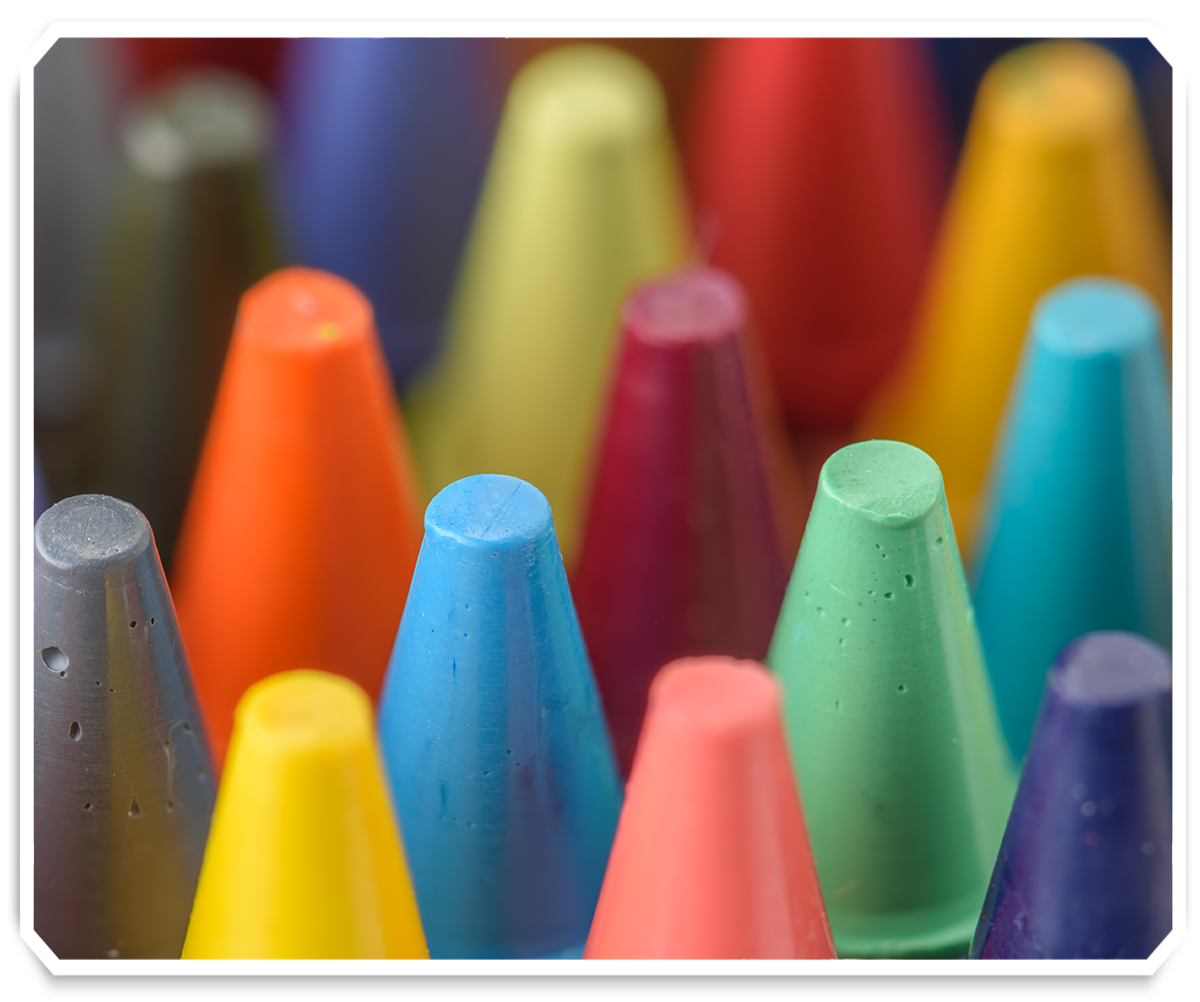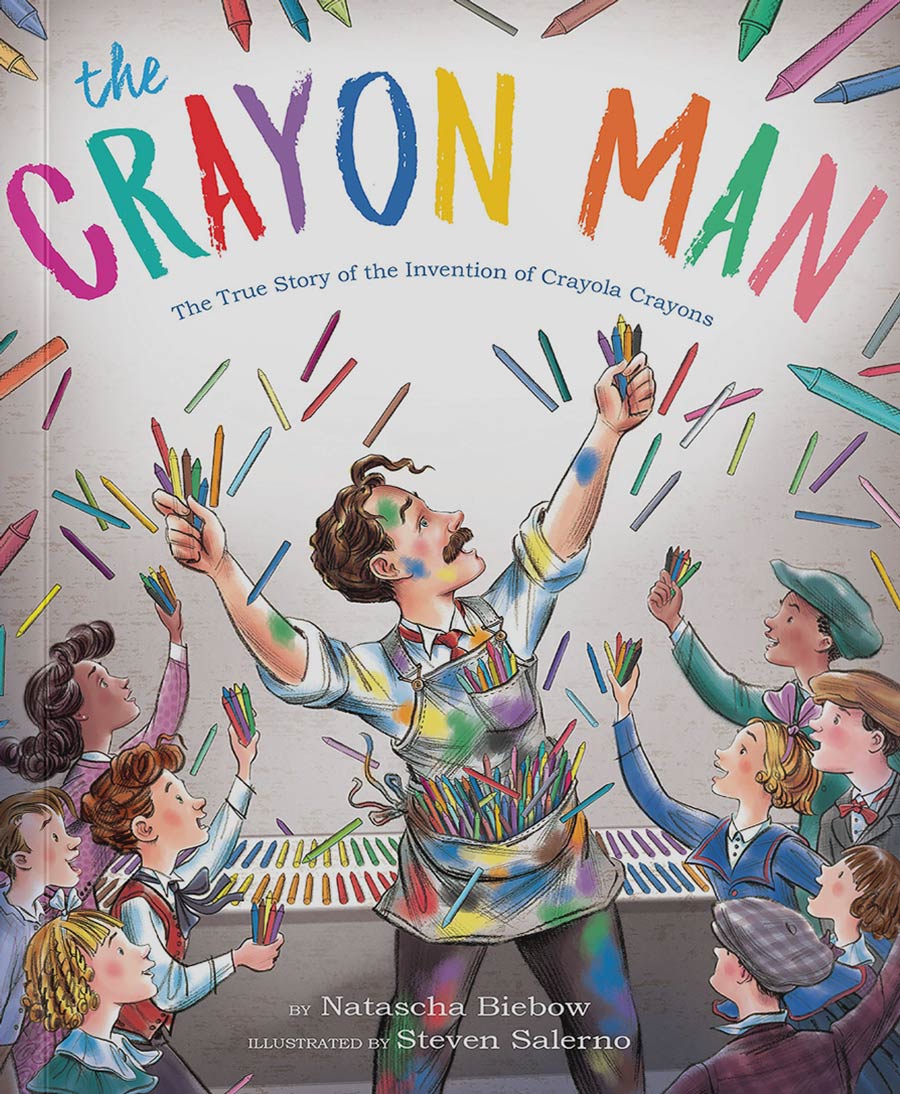dwin Binney invented tools other people needed. He was ingenious, working alongside his cousin, C. Harold Smith. Both men were gifted, but in different ways. Edwin was curious, and Harold enjoyed sales. Together, they became Binney & Smith. Author Natascha Biebow tells their story in The Crayon Man (Houghton Mifflin, 2019).
Edwin’s curiosity and experimentation led him to invent the first dustless chalk for which he won a medal at the St. Louis World’s Fair, the Louisiana Purchase Exhibition, held in St. Louis, Missouri, in 1904. He was inspired by his wife Alice, a school teacher, who encouraged his efforts to invent safe, affordable crayons since chalk smudged and pigments could be toxic. Edwin thought and thought, created, and tried again until he—in 1903—invented the first box of eight, colored, wax crayons. Since that time, Crayola has produced various size box selections and rainbows of colors.
The first box of crayons had eight colors and was sold for a nickel. Find some nickels and pennies. Each nickel is worth five cents, or five pennies. Match five pennies to each nickel. Count by five to twenty-five, then fifty. Practice writing those numbers.
Today we enjoy the ability to draw and paint on wood, paper, cardboard, anything, really. In the 1800s, the cost of paper made writing with chalk and a slate (chalkboard) more practical. This is why the invention of dustless chalk was so important. Draw with chalk on black paper. Use a tissue to experiment with smearing and mixing colors.
Read the last pages of the book entitled How Crayola Crayons are Made Today. To learn more about crayon history, visit this link.
Binney & Smith exhibited their inventions at the St. Louis World’s Fair. A World’s Fair is an exhibition where many people traveled to visit and see new things, including automobiles, electric lighting, and even the x-ray machine. Put on your own family’s “world’s fair.” Have children create an invention to display at it and be prepared to tell others about their inventions, what they do, and why they are important.
Talk about the difference between melting and freezing. Some things melt when exposed to heat, like crayons and ice. Take turns thinking of other things that melt with heat: chocolate, ice cream, and popsicles. Other substances freeze when exposed to cold temperatures. Place a crayon and an ice cube in the sun. Check on the items every few minutes. Observe the melting process. Which one melts faster? Draw a picture of each stage of the experiment. Enjoy a frozen treat on a hot day. Melt some chocolate, and dip strawberries, pretzels, marshmallows, bananas, and other treats.
Read Harold and the Purple Crayon by Crockett Johnson (1955; reprinted HarperCollins, 2015). Notice how the illustrations in Harold and the Purple Crayon differ from The Crayon Man.
Learn the primary colors: red, blue, and yellow. Using paint, make other colors by mixing red and blue, blue and yellow, and red and yellow. Name the colors. Create a piece of art using the colors made, and display when dry.
Edwin inspired his workers’ imagination with bouquets of real flowers. Seeing the colors of the flowers helped the team create new, unique colors. Purchase a bouquet of flowers or create an assortment of fruits and place them in the middle of the table. Use this display to draw a still life. A still life is a drawing or painting of an arrangement of items. Hang your art on the refrigerator or other prominent place.

Edwin was a listener. He listened to the ideas and thoughts. What does it mean to listen to someone? What does it mean to ask for help and ideas from others? Why is listening and asking questions important? Bold leaders understand the importance of listening to ideas and asking questions.

